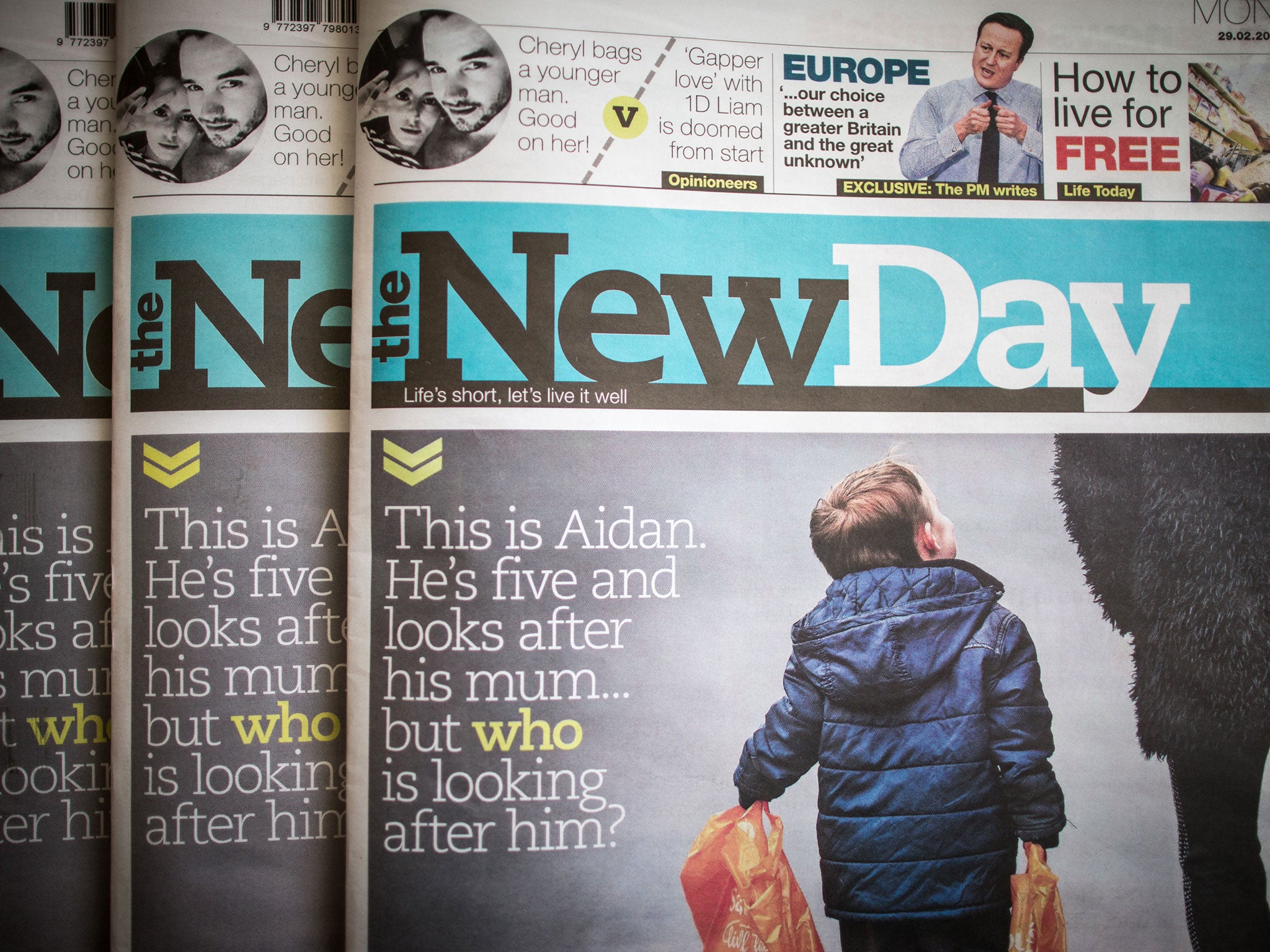The demise of The New Day tells us a lot about the new media landscape
Where once print was able to find a way of neutralising or exploiting threats to its pre-eminence from newer media, digital media has proved a more difficult challenge

Your support helps us to tell the story
From reproductive rights to climate change to Big Tech, The Independent is on the ground when the story is developing. Whether it's investigating the financials of Elon Musk's pro-Trump PAC or producing our latest documentary, 'The A Word', which shines a light on the American women fighting for reproductive rights, we know how important it is to parse out the facts from the messaging.
At such a critical moment in US history, we need reporters on the ground. Your donation allows us to keep sending journalists to speak to both sides of the story.
The Independent is trusted by Americans across the entire political spectrum. And unlike many other quality news outlets, we choose not to lock Americans out of our reporting and analysis with paywalls. We believe quality journalism should be available to everyone, paid for by those who can afford it.
Your support makes all the difference.A vibrant media needs a plurality of voices, and ought to encourage innovation. Therefore whatever the circumstances, it is sad when a print title folds. So it is with The New Day, Trinity Mirror’s brave entrant into the newspaper market, which as its motto – “Life is short, let’s live it well” poignantly foretold – enjoyed the shortest of careers on the newsstands. And, although the factors involved were very different, it follows The Independent's move to online only a few weeks ago, and, more appositely, the continuing broad decline in print sales and circulations, with 350 redundancies being announced at The Guardian and Observer last month. Within a few years there may be few if any ‘broadsheet’ papers left in print form, while many towns and cities have already lost their local titles.
In some respects, The New Day’s demise was sui generis. The financial problems of its parent meant that it could not be sustained during unexpectedly difficult conditions during its start-up phase. The concept of the paper was novel, but it did not find a ready clientele, as the Independent’s offshoot, i, did in 2010. Put at its bluntest, the early editions of The New Day were much more like a magazine than a newspaper and, perversely, the higher quality newsprint used for its production heightened that impression.
The New Day may have been a victim of its self-conscious attempt to appeal to a female audience and set a fresh agenda. For a product in the newspaper market, it lacked news, undercooked sport and politics, and its features couldn’t boast the rollicking energy so often found in its sister title, the Daily Mirror. This should not be held against its talented staff or editor, none of whom deserve the very public pain they are suffering this week. Unfortunately for them, their product was not a sufficiently unique or compelling proposition, which is why it was the right commercial decision to close today rather than suffer a slow, embarrassing death.
The New Day was plainly also a casualty of the long-term trends in the industry, in which consumers increasingly find their news and commentary supplied by websites and social media. It is a more democratic process than once it was, where readers can “upvote” stories and self-publish their thoughts, whatever their value, and, collectively, determine what is trending, therefore setting the agenda for broadcasters and print media, rather than the other way around. Where once print was able to find a way of neutralising or exploiting threats to its pre-eminence from newer media, such as film, radio and television, forming new, symbiotic relationships, and printing listings and gossip to retain sales, digital media has proved a more difficult challenge, as is apparent. This is especially true for local print titles, which have seen their market share of small ads and circulations decline together, to often devastating effect.
Mobile devices are the constant companions of many, in a way that newspapers once were. The New Day may not be the last print launch we will see, but neither will its failure be the last.
Join our commenting forum
Join thought-provoking conversations, follow other Independent readers and see their replies
Comments